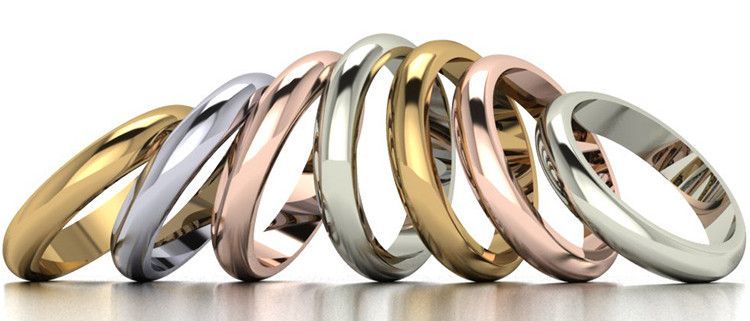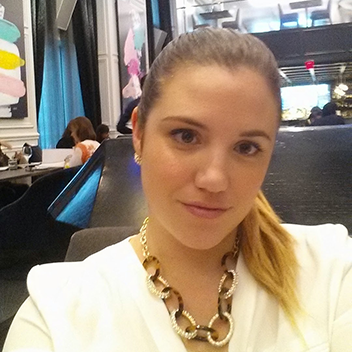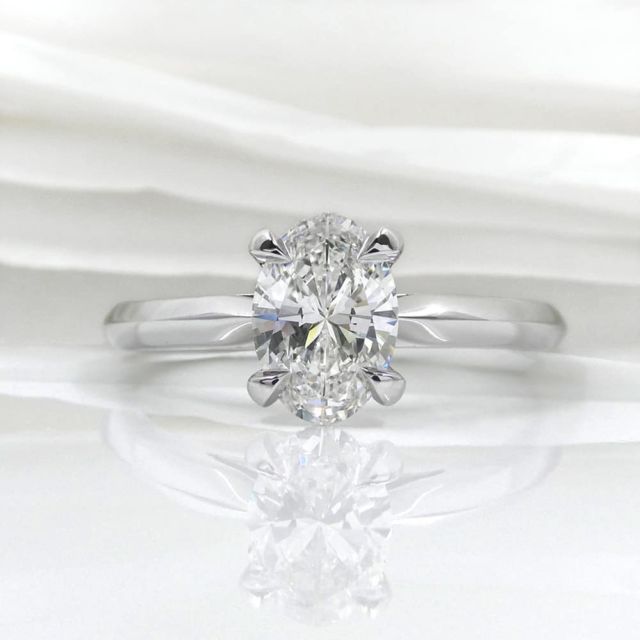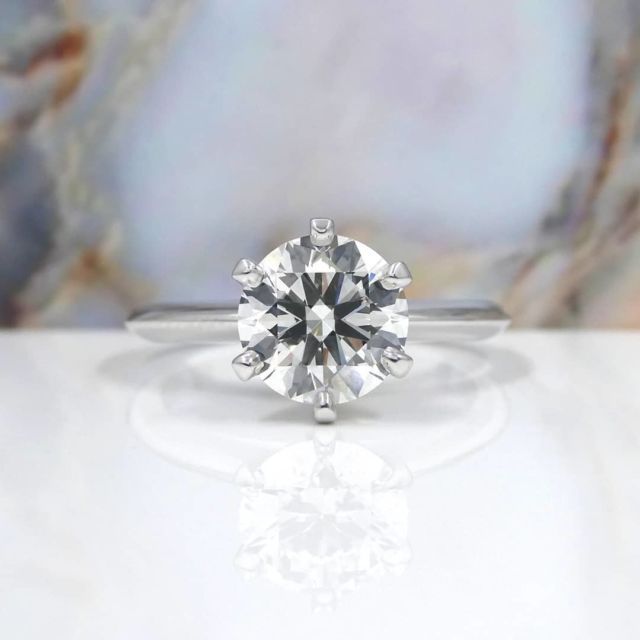Sara Cumming is the Jewelry Production and Social Media Coordinator at Kimberfire – a brilliant way to buy diamond engagement rings, fine diamond jewelry, and loose diamonds in Toronto, ON and across Canada. She holds a Bachelor of Fine Art from York University and a Diploma in Jewelry Arts from George Brown College. She is skilled in jewelry design using CAD software, as well as traditional goldsmith techniques. When she is not immersing herself in all things jewelry, Sara is a dog mom to Barley, her beagle mix rescue dog who loves a good tummy rub.
A Class on Gold vs. Platinum Jewelry

September is here, summer is coming to a close (sadly) and the kids are heading back to school. Whether starting kindergarten or first year at university, September is the month in which education is front and center. It is with that in mind that we will continue the learning process with a short course on the differences between yellow gold, rose gold, white gold, and platinum. While we can easily see the colour difference between the golds, what is it that makes them different? What do the different karats of gold mean? Is white gold or platinum better for custom engagement rings? Would you make a different decision for women's wedding bands or men's wedding bands? We will provide you with all the information you need to make a confident and knowledgeable jewelry purchase.
Pure Gold
Let’s begin by taking a look at gold. Gold is a chemical element from our earth that has been prized for its beauty throughout human history. Pure gold does not come in different colours such as pink or white, it is always only yellow. Gold metal is soft, malleable, has good tension and torsion strength and does not oxidize. The purity of gold is measured in karats which are measured out of a total of 24 parts, meaning pure gold is 24 karat gold. However 24K gold is extremely soft and unsuitable for jewelry, as it will bend and dent very easily. The solution for this is to mix the pure gold with other metals, a process called alloying.
Alloy Me to Explain
Pure gold is alloyed to change its working properties (such as hardness), change its colour or to reduce the cost of the material. Gold is commonly alloyed with copper, silver, zinc, palladium and/or nickel. Gold can be alloyed in 22K, 19K, 18K, 14K and 10K. 22K gold is not common in Europe and North America because it is still extremely soft, although it can be found in many Eastern countries. 19K gold is relatively new to the market, and therefore cannot be found everywhere. 19K gold is 79.2% pure gold with the remainder being other metals. 18K gold is a very common alloy and is 75% pure gold. The other most common karat is 14K which is 58.5% pure gold. 10K gold is a cheaper and harder gold alloy that is only 41.7% pure gold. For important jewelry pieces such as wedding and engagement rings we would suggest 19K, 18K, or 14K. An understanding of alloying explains how pure yellow gold is made into various colours.
Yellow Gold
Yellow gold is the traditional colour of jewelry and has a beautiful warm hue. Yellow gold is usually alloyed with a mix of silver, copper and zinc. If you have diamonds which are lower in colour it is best to set them into yellow gold as a white metal will show the yellow in the diamond more.
Rose Gold
Rose gold or pink gold was popular in the early 1900’s especially in Russia, and it was often referred to as Russian gold. After falling out of favour for many years rose gold has made a comeback and is now a popular choice for engagement and wedding rings. It is a feminine metal that compliments all different skin tones. Rose gold is alloyed with copper and sometimes a small amount of silver or zinc. The colour can vary between a pale pink to almost a red depending on the amount of copper in the alloy.
White Gold
White gold first became popular in WWII as a substitute to platinum, as platinum was being put towards the war effort and its use in jewelry was prohibited. White gold is made by mixing pure gold with at least one white metal, such as palladium, manganese, nickel, silver or zinc. The one downside of alloying with nickel is that it can cause allergic reactions in some people. There are white gold alloys that don’t contain nickel and you can always ask your jeweller what alloy they use. White gold is not a pure white colour and has a slight shade of yellow or gray. To achieve that bright white colour the white gold is plated with rhodium, which is very similar to platinum but even harder and whiter. Rhodium plating will wear down over time and will have to be re-plated every few years.
Platinum
Platinum is also a chemical element from the earth. It was first used for jewelry by ancient South Americans in about 100AD, but their methods of working with platinum were lost with their culture. When platinum was re-discovered by the Spanish conquistadors they thought it was a lesser metal, and couldn’t work with it as it wouldn’t melt. Platinum has such a high melting temperature that its jewelry uses were very limited until the invention of the oxyhydrogen torch in the mid 1800’s. By the late 1800’s platinum jewelry was all the rage and was especially valued for diamond settings. Platinum was one of the most popular choices for jewelry until WWII when it was banned for all non-military uses. Yellow gold or white gold was the prevalent metal used for jewelry until platinum made its comeback in the 1990’s. Platinum is a dense, malleable, ductile, unreactive grey-white metal. In jewelry it is used in an almost pure form, usually 90-95% platinum. It is alloyed with a small amount of iridium or ruthenium, which are metals similar to platinum, which help make the metal easier to work with. Platinum is a very dense metal which means a platinum ring will be heavier than a gold ring. Platinum is also more expensive than gold because it weighs more and because it is a rarer metal. Platinum is very durable and doesn’t bend easily making it perfect for gem setting. Platinum does scratch easier than gold alloys, however when gold is scratched it is actually losing metal, while in platinum the metal is just being displaced. This leads to the patina finish seen in antique rings. To keep your platinum rings high polish they will have to be re-polished by a goldsmith on a yearly basis.
So Which Metal to Choose for Your Jewelry?
There is no right or wrong choice when deciding on a metal. Yellow and rose gold are chosen primarily for their colour and are an excellent choice for someone who likes a warm metal hue against their skin. For those looking for the white metal look that is extremely popular these days, the choice is between white gold or platinum. One is no better that the other, they each merely have different pros and cons. White gold is less expensive and lighter than platinum and is a strong alloy. However when it is scratched there will be some metal loss and it needs to be re-plated with rhodium every few years. Platinum is very pure and strong and perfect for setting stones. It has very minimal metal loss and can develop a beautiful antique look. It is heavier and more expensive than white gold. It does scratch more easily than gold and if a perfect high polished look is what you are after, it will have to be re-polished on a yearly basis.
Class Dismissed
Even though many of us aren’t back at school it is important to keep learning all the time. This short course was meant to help explain terms that we always hear about but perhaps weren’t really sure what they meant. This knowledge can help make the jewelry buying process much easier and you can be confident that you have made an informed decision. Class dismissed!
About Kimberfire
A brilliant way to buy high-quality custom engagement rings, diamonds, and jewelry. Discover expert guidance, complete transparency, and unmatched value in Toronto and across Canada.
Share this entry
Leave a Reply
Want to join the discussion?
Feel free to contribute!







